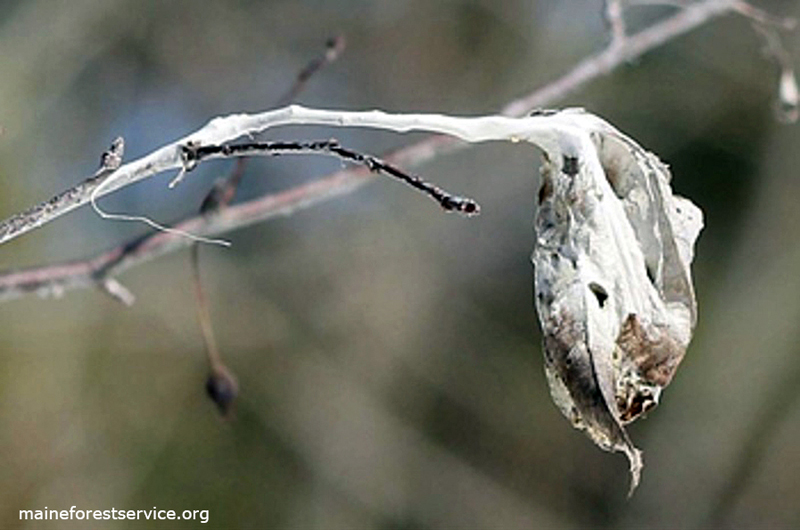
Entomologists from the Maine Department of Agriculture, Conservation and Forestry are reminding everyone that now is the best time to remove browntail caterpillars from trees.
Entomologists from the Maine Department of Agriculture, Conservation and Forestry are reminding everyone that now is the best time to remove browntail caterpillars from trees. Browntail caterpillars cause a poison ivy-like rash and they are impacting a broad swath of Maine. Contact with this caterpillar’s hairs can cause severe reactions for some individuals.
Browntail caterpillars spend the winter webbed in silk-wrapped leaves on the tips of hardwood branches, especially oak and fruit trees. Now through mid-April is when to look for the bright white silk tying a few leaves to the tips of oak and fruit tree branches.
Clip out the web and destroy it by dropping it in a bucket of soapy water and soaking it overnight; do not leave it on the ground. The caterpillars become active as soon as warmer weather arrives, so do this task as soon as possible. It is also important to clip webs before mid-April because of the increased risk of toxic hair exposure.
Browntail caterpillar webs are found in Maine from the New Hampshire border to Deer Isle, and inland to Raymond, Turner, Rome, Smithfield, Burnham, and Eddington. The moths have been seen as far west as Kingfield, north to Ashland, and east to Topsfield, on the New Brunswick border.
For more than 100 years, Maine people have known that “an ounce of prevention is worth a pound of cure” when it comes to browntail moths. Learn how to recognize browntail moth webs, then go and check trees for their presence. If they are reachable, clip and destroy them. If they are out of reach, now is the time to call and schedule professional help.
Survey a public space in town; contact the Maine Forest Service for help in identifying webs, if necessary. Additional advice may be obtained from the nearest cooperative extension office or soil and water conservation district.
Background information: A video showing how to clip the webs, a list of arborists who can prune webs that are out of one’s reach, and a list of licensed pesticide applicators can be found at maine.gov/dacf/mfs/foresthealth/invasivethreats/browntailmothinfo.htm.
For more information, call 211 or 1-866-811-5695.



